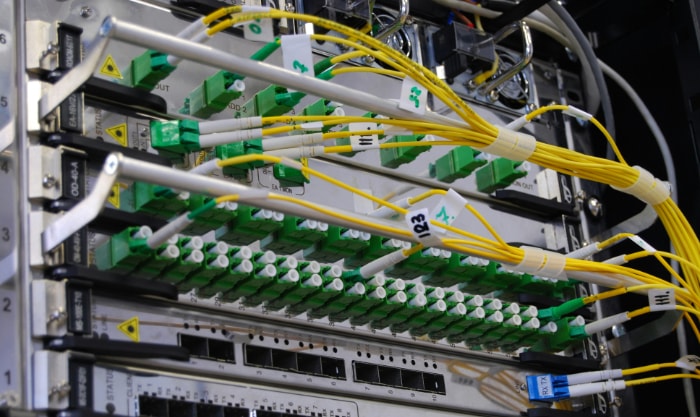Forward Proxy vs. Reverse Proxy: Roles and Uses

Proxies are powerful tools that shape how data flows across networks, serving as intermediaries between clients and servers. Depending on their type, they can enhance privacy, protect infrastructure, or boost performance.
However, forward proxies and reverse proxies serve vastly different purposes, and distinguishing between them is vital for building effective and secure systems.
Definitions and Core Concepts
Proxies act as intermediaries in networks, making them valuable tools for managing data flow between clients and servers. Two prominent types of proxies—forward proxies and reverse proxies—serve distinct roles and operate in fundamentally different ways.
Grasping their individual functions and how they influence traffic direction helps clarify their importance in networking and security.
Forward Proxy
A forward proxy operates on behalf of the client, sitting between the user and the internet. Its primary role is to manage outbound requests originating from the client’s network and send them to their intended destinations.
By doing so, it can mask the client’s IP address, providing privacy and anonymity. This makes forward proxies particularly useful for individuals or organizations that want to keep their online activities private, enforce access restrictions, or bypass geographic restrictions.
Another important capability of a forward proxy is its potential to control and filter outbound traffic. For example, companies may deploy forward proxies to block access to certain websites, enforce organizational internet usage policies, or cache frequently accessed content for faster retrieval.
These functions not only improve security but also enhance efficiency. However, for clients to benefit from a forward proxy, they must explicitly configure their devices or applications to route traffic through it.
Reverse Proxy
A reverse proxy serves the opposite role. Rather than managing requests from clients to the internet, it sits in front of servers and handles inbound traffic from clients attempting to access the servers.
Acting as a middle layer between users and the backend infrastructure, the reverse proxy ensures that clients cannot directly interact with the servers themselves. This not only protects the servers from potential attacks but also allows better management of incoming traffic.
Reverse proxies are widely used in applications where large volumes of requests need to be distributed efficiently. For example, they can route traffic to multiple servers to ensure none of them are overwhelmed, a process known as load balancing.
Additionally, reverse proxies can terminate SSL/TLS connections, taking over the responsibility of encrypting and decrypting data, which reduces the processing burden on the servers.
Traffic Direction and Awareness
The most fundamental difference between forward and reverse proxies lies in the direction of traffic they handle. Forward proxies facilitate traffic originating from the client, directing it toward internet resources.
Reverse proxies, on the other hand, manage traffic coming from external clients, directing it to internal servers.
Another significant distinction is how they operate relative to client and server awareness. Forward proxies require explicit configuration on the client side because the client needs to know where to send its requests.
Reverse proxies, however, are typically transparent to the client. Users interacting with a web service through a reverse proxy usually have no idea that the proxy is in place, as it seamlessly relays their requests to the appropriate backend server.
Primary Use Cases and Applications

Forward and reverse proxies excel in different scenarios based on their distinct roles within a network. While forward proxies focus on managing outbound client requests, reverse proxies take charge of inbound server traffic.
Each type of proxy provides unique solutions to challenges such as privacy, resource optimization, and network security.
Forward Proxy Scenarios
Forward proxies are often implemented in environments where managing client-side traffic is essential. Organizations use them extensively to enforce content restrictions and improve security across their networks.
For example, a business might deploy a forward proxy to restrict access to non-work-related websites or block malicious sites, ensuring a safe and productive browsing environment for employees. These proxies can also cache commonly accessed resources, reducing bandwidth usage and improving connection speeds.
Another common use case involves bypassing geographic restrictions. Individuals or businesses can use forward proxies to access content or services that are unavailable in their region due to geo-blocking.
By routing traffic through a proxy server located in a different country, users can appear to be browsing from that location, enabling access to restricted resources. Forward proxies also assist in preserving user anonymity by masking client IP addresses, making them a popular choice for privacy-conscious users.
Reverse Proxy Scenarios
Reverse proxies specialize in optimizing and protecting server infrastructure by managing the flow of inbound requests from clients. A common application is load balancing, where a reverse proxy distributes incoming traffic across multiple servers to prevent any single server from becoming overloaded.
By evenly distributing requests, reverse proxies ensure smooth performance and high availability, even during traffic surges.
Another important use case involves secure communication. Reverse proxies handle SSL termination by encrypting and decrypting data exchanged between clients and servers.
Offloading this demanding task from backend servers allows them to focus their resources on handling application requests. Reverse proxies can also centralize the management of SSL/TLS certificates, simplifying the security configuration for server administrators.
Server protection is another critical role that reverse proxies fulfill. By hiding the actual IP addresses of backend servers, they shield the infrastructure from direct exposure to the internet.
This additional layer of security helps mitigate threats such as Distributed Denial of Service (DDoS) attacks or unauthorized access attempts, making reverse proxies an essential component in securing modern web applications.
Comparison of Forward and Reverse Proxy Applications
Both forward and reverse proxies manage traffic, but their objectives and areas of influence differ significantly. Forward proxies focus on the client side, offering privacy and control over outbound requests, while reverse proxies operate on the server side, ensuring security and efficiency for backend systems.
| Scenario | Forward Proxy | Reverse Proxy |
| Anonymity | Client privacy | Server IP masking |
| Traffic Volume | Manages client-initiated requests | Handles high inbound server traffic |
Forward proxies cater to users and organizations seeking greater control or anonymity during internet access. Reverse proxies, however, are tailored for businesses aiming to scale their server infrastructure, protect their resources, and maintain seamless access for users.
Each type of proxy addresses specific network challenges, making them valuable tools in their respective domains.
Security and Privacy Implications

Proxies play a vital role in enhancing security and privacy within networks, but their effectiveness depends on how they are implemented and maintained. While both forward and reverse proxies serve to protect their respective systems—clients and servers—they also present risks that must be carefully managed.
Forward Proxy
Forward proxies help defend clients against potential threats by filtering outbound requests. Acting as a gatekeeper, the proxy can block access to malicious or harmful sites, ensuring that users are shielded from phishing pages, malware, or other security risks.
Organizations often rely on forward proxies to enforce internet access policies, providing not only enhanced safety but also better control over client activity on a network.
However, improper configuration of forward proxies can lead to significant security vulnerabilities. For example, if the proxy is not properly secured, it could expose internal network details to unauthorized users.
Attackers might exploit a poorly maintained or misconfigured forward proxy to gain access to sensitive internal systems or bypass firewalls. This makes the proper setup and ongoing management of forward proxies critical in safeguarding client-side security.
Privacy is another key feature of forward proxies, as they can obscure client IP addresses during requests. While this provides anonymity for users, it also introduces the risk of misuse.
Malicious actors may use forward proxies for illegitimate purposes, such as hiding the source of cyber-attacks or circumventing access controls.
Reverse Proxy
Reverse proxies serve as a protective shield for servers, ensuring backend systems remain hidden and secure from direct client interaction. By acting as an intermediary, a reverse proxy provides a barrier that limits potential exposure to external threats.
This is especially effective in mitigating Distributed Denial of Service (DDoS) attacks, as the proxy can manage and filter incoming traffic before it reaches the servers. Additionally, reverse proxies are commonly used in authentication processes, adding an additional layer of security for sensitive applications.
Despite their defensive role, reverse proxies can become a liability if not designed and maintained properly. A reverse proxy often acts as the single point of entry for backend servers, which makes it a potential single point of failure.
If an attacker gains control of the proxy, the entire backend system could be exposed to significant risks. Hardened configurations, continuous updates, and proper monitoring are essential to minimize these vulnerabilities.
Another common concern for reverse proxies is SSL/TLS termination. Handling encryption and decryption at the proxy can improve performance for backend servers but also makes the proxy a target for attackers, especially if sensitive data is being transmitted.
Proper measures, such as secure key management and regularly updated protocols, are vital to mitigate potential breaches.
Shared Vulnerabilities
Both forward and reverse proxies share certain vulnerabilities that relate to their role as intermediaries in network communication. SSL/TLS decryption, a feature provided by both types of proxies, enhances performance and monitoring capabilities but introduces risks if implemented without sufficient security controls.
Attackers may exploit weak encryption or poorly managed certificates to intercept sensitive data, which is especially problematic in environments handling large volumes of confidential information.
Logging practices are another shared concern. While logs are necessary for troubleshooting and monitoring, they often contain sensitive information such as IP addresses or request details.
Poor data retention policies or insufficient access controls for these logs could lead to privacy breaches or expose valuable information to attackers.
Performance Optimization Techniques

Proxies not only improve security and privacy but also play a significant role in optimizing network performance. By leveraging caching, load balancing, and latency reduction strategies, both forward and reverse proxies ensure smoother traffic handling and better overall efficiency.
Caching Mechanisms
Caching is one of the most effective methods employed by proxies to enhance performance. Forward proxies focus on caching external content that is frequently requested by clients.
For example, when multiple users within a company access the same website or file, the forward proxy can store a local copy of that content. Such caching reduces the need to repeatedly fetch the same data from external servers, saving bandwidth and significantly improving response times for users.
Reverse proxies, on the other hand, handle caching for server-side resources, particularly static assets like images, JavaScript files, and stylesheets. By storing these assets closer to the client, a reverse proxy reduces the load on backend servers and speeds up content delivery.
This approach is especially beneficial for websites with high traffic, as clients can retrieve cached resources without overburdening the primary servers. Effective caching policies allow proxies to deliver content faster, lower latency, and improve scalability.
Load Balancing Strategies
Load balancing is a core function of reverse proxies, designed to maintain the stability and availability of services during periods of high demand. Reverse proxies distribute incoming requests across multiple servers using strategies such as round-robin, least-connections, or geographic routing.
Round-robin assigns requests in rotation among servers, ensuring that no single server is overwhelmed. The least-connections approach directs traffic to servers with the fewest active connections, optimizing resource usage. Geographic routing sends requests to servers based on their proximity to users, reducing latency and improving response times.
These techniques help ensure that the server infrastructure remains resilient against traffic spikes and failures by spreading the workload evenly. Users benefit from consistent and reliable service regardless of the request volume.
Forward proxies do not typically implement load balancing since their function is focused on client traffic heading outward, but reverse proxies rely heavily on this capability to enhance server-side performance.
Latency Reduction
Reducing latency is a critical goal for proxies, ensuring faster delivery of content and a better user experience. Both forward and reverse proxies employ techniques to minimize delays in data transmission.
Compression is a common strategy, where proxied content is compressed before being sent to the client, reducing the amount of data that needs to travel over the network. This process leads to faster page load times and reduced bandwidth consumption.
Support for modern protocols, such as HTTP/2, also contributes to latency reduction. HTTP/2 allows for multiplexing, where multiple requests and responses are sent simultaneously over a single connection, improving communication efficiency.
Connection pooling is another technique used by proxies, enabling them to reuse established client-server connections instead of opening new ones for each request. By reducing the overhead of repeated connections, proxies help maintain low latency while accommodating high traffic volumes.
Combining caching, load balancing, and latency reduction strategies enables proxies to optimize performance on both the client and server sides. These techniques not only improve speed and reliability but also ensure that network resources are used efficiently, making proxies a valuable tool for maintaining high-performance systems.
Conclusion
Forward and reverse proxies serve distinct roles within networking, each designed to address specific needs and challenges. Forward proxies sit on the client side, managing outbound requests to the internet, providing anonymity, and enabling content filtering or access restrictions.
Reverse proxies, in contrast, operate on the server side, regulating inbound traffic, ensuring server security, and optimizing performance with tools like load balancing and caching. The primary distinction lies in their traffic direction and their focus, forward proxies handle client-initiated requests, while reverse proxies protect and manage server-side operations.
Selecting the right type of proxy depends on the requirements of your organization or system. For those prioritizing client privacy, external content access, or control over outbound traffic, a forward proxy is the ideal solution.
On the other hand, businesses or web apps needing scalability, efficient resource utilization, and backend security will benefit from a reverse proxy. Both types of proxies offer valuable tools for performance, security, and privacy, making them essential components of well-designed network architectures.
Carefully evaluating your specific goals can help you determine which proxy aligns best with your needs.


